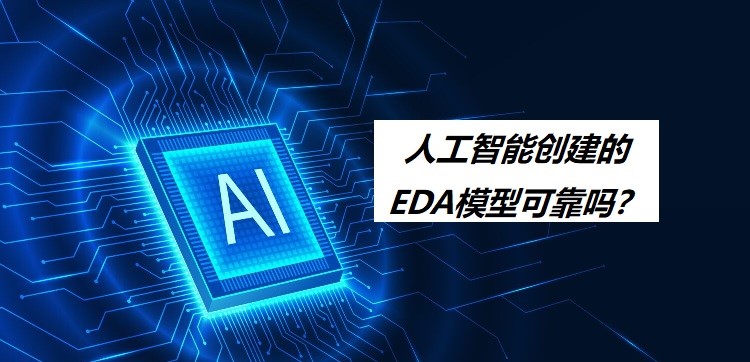In May 2024, an insightful article was published in Semiconductor Engineering by Brian Bailey, a technical editor with a deep background in electronic design automation (EDA). In this article, Bailey explores the reliability and cost-effectiveness of artificial intelligence (AI) for creating EDA models in the semiconductor industry. He points out that EDA models need to pass a more rigorous quality and cost-benefit analysis than other AI applications in the industry, as AI failures can cost money and increase all associated costs.

Fig: Are EDA models created by AI reliable?
In the article, Bailey makes several important points about AI-created models, including the value of the model, the cost, the reliability of the data source, the time and effort required to create and validate the model, and the accuracy and applicability of the model. He also discusses multiple applications of AI in EDA modeling, such as optimizing model creation, execution engine replacement or enhancement, on-demand model generation, and applications in feedback loops. The following are some specific points:
Reliability and Challenges of AI
In the semiconductor industry, the introduction of AI has brought significant opportunities along with challenges. Bailey notes in the article that “AI-created models need to pass more rigorous quality and cost-benefit analyses,” due to the fact that in the semiconductor industry, any small missteps can lead to significant financial losses. In the article, Carlos Morales, VP of AI at Ambiq, suggests that “many methods don't require large datasets,” such as reinforcement learning, which relies on data synthesis and small/no sample learning, and that these methods reduce the need for massive datasets.
Cost vs. benefit tradeoffs
In his article, Bailey emphasizes the need to consider the value and cost of models when evaluating AI models. He mentions that “models are one of the most expensive projects a development team can create. ‘Mazen El Hout, senior product marketing manager at Ansys, adds that ’when you want better performance or faster insights, you're going to do it at the expense of accuracy “, which applies to use cases where high-fidelity results are not required.
AI as an assistant, not a replacement
Dan Yu, AIML Solutions Manager for Siemens EDA's Design Verification team, is quoted in the article as saying, “AI in its current form will not immediately change or directly replace human workers. It is more like an assistant.” This suggests that while AI can provide rapid prediction and analysis, human expertise and validation are still essential at critical decision points.
Abstraction and concretization of models
Bailey discussed the need to find a balance between abstraction and concreteness in the creation of models, and Marc Serughetti, Senior Director of Product Line Management at Synopsys, emphasized that “it's absolutely critical to introduce techniques to automate the creation of models,” and that the industry must be careful to consider how much information is being introduced into models.
The Importance of Debug and Verification
Bailey noted that more than half of development resources are spent on verification, and that debugging can take a lot of time during the verification process. He quoted Adam Arnesen, principal systems engineer in Emerson's NI Test & Measurement group, “We ran an interesting test of waveform anomaly detection,” which showed that AI can help narrow the search and provide additional insights.
hile the potential of AI in the semiconductor industry is huge, we need to carefully evaluate its potential and find its right place in real-world applications.Bailey's article provides insights into the use of AI in the semiconductor industry. His perspective emphasizes that while pursuing technological innovation, we must remain cautious to ensure that the technology is reliable and cost-effective.
I agree with Bailey's view that AI should be used as an assistant to humans, not a replacement. When implementing AI solutions, the focus should be on creating models that provide real-world value, while ensuring that they are transparent and interpretable so that human professionals can effectively validate and trust them. As AI technology continues to advance, education and training will become increasingly important. Industry professionals will need a deep understanding of AI in order to utilize it effectively and intervene when necessary. Ultimately, the successful application of AI will depend on how we integrate it into existing workflows and ensure that it complements human expertise.






